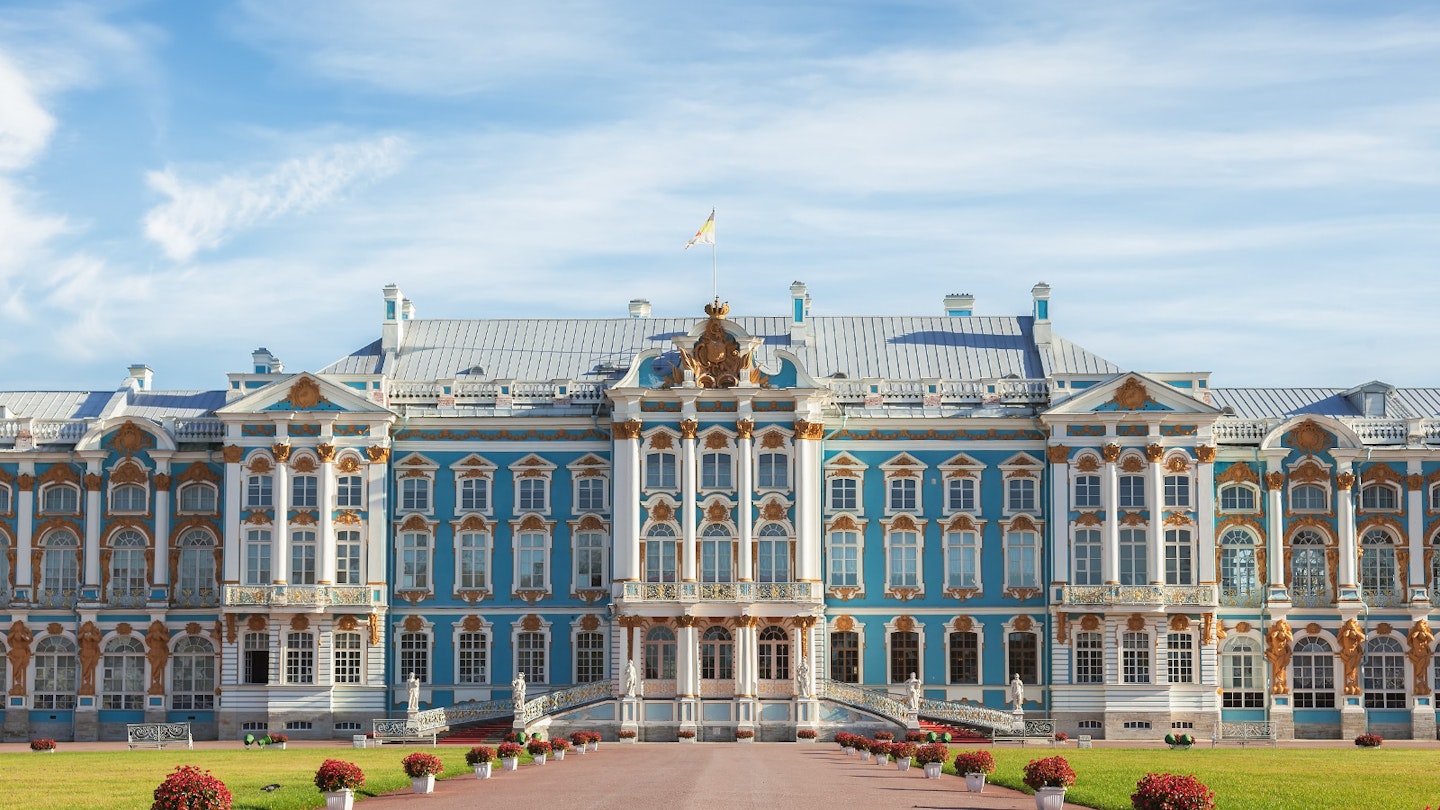Discover the Splendor Surrounding St Petersburg
A single trip is nowhere near enough to truly appreciate the splendour of St Petersburg. However, even a first-time visitor should consider a quick escape from Russia’s imperial capital to the nearby parks, palaces, and medieval towns that are integral to its cultural circle. Easily accessed by car, public transport, or tourist bus, the following destinations never fail to impress with their history and grandeur.
Feel Like a Royal in Pushkin
Every Russian child learns the tale of how young Alexander Pushkin – the country’s most celebrated poet – gained recognition by reading his own verses to the renowned poet Gavriil Derzhavin at the lyceum in Tsarskoe Selo (‘King’s Village’). Today, that lyceum serves as a museum and is among the popular attractions in the city of Pushkin. Another notable site is the classical Alexander Palace, where the last Russian royals, the Romanov family, lived until their tragic end during the Russian revolution of 1917. Nonetheless, the most famous sight here is undoubtedly Empress Catherine the Great’s baroque palace, designed by Rastrelli and home to the world-famous Amber Room, which was stolen by the Nazis and meticulously reconstructed by Russian experts in the late 20th century.
Getting there: From St Petersburg’s Moskovskaya metro station, catch marshrutky (minibuses) 286, 299, 342, or K545 (30 minutes) to Pushkin. Suburban trains also run from Vitebsky vokzal (though they are infrequent except on weekends); get off at Detskoe Selo station (30 minutes) from which marshrutky frequently run to Tsarskoe Selo.
Stroll the Palatial Park in Pavlovsk
If it were up to an introvert to build their summer residence, the result might well be the glorious Pavlovsk Great Palace. Once the residence of Emperor Paul I and originally set deep in the woods, the palace remains surrounded by the dense greenery of Pavlovsk Park. Visitors can take leisurely strolls, meandering through geometric alleys or navigating right through the lush bushes. This delightful walk inevitably leads to a series of serene ponds and stone steps guarded by lion statues or down a beautiful alley, once the official route for royal carriages. The palace now functions as a museum worth exploring, showcasing grand Halls of War and Peace alongside the intimate royal suites.
Getting there: Trains and marshrutky running from St Petersburg to Pushkin continue on to Pavlovsk. Marshrutky frequently shuttle between Pushkin and Pavlovsk; catch one near the southeast corner of Catherine Park, with the travel time being approximately 15 minutes.
Admire the Fountain Symphony of Peterhof
Visitors will inevitably encounter a patch of wet stones in the lower park of Peterhof, with crowds cautiously treading over them, eager to discover which movement activated the sudden rush of water. This famous trick fountain, designed to amuse unsuspecting guests of Peter the Great’s palace complex, adds to the park’s charm. You can begin exploring from the harbour if arriving by hydrofoil or ascend to the royal palace set atop the highest point in the park. Marvel at the magnificent fountains sprinkled across the grounds, including the splendid ensemble of the Grand Cascade. Stroll through the glittering mirrored halls and art-filled galleries of the Grand Palace, or visit the more humble wood-panelled dwellings of Peter the Great, known as the Monplaisir. You can even marvel at the size of his ‘penalty cup’—a vessel he would fill with vodka and compel late party guests to drink to the bottom, as the legend goes.
Getting there: Marshrutky 300, 424, and 424A depart from outside the Avtovo metro station in St Petersburg. A suburban train (40 minutes) runs from Baltiysky vokzal to Novy Peterhof, from where you can walk (around 30 minutes). From May to September, the Peterhof Express hydrofoil (30 to 40 minutes) departs from the jetty in front of the Admiralty in St Petersburg every 15 minutes; this route takes you directly to the palace.
Feel Russia’s Naval Might in Kronshtadt
The small port town of Kronshtadt – located on Kotlin Island in the Gulf of Finland – has served as a vital Russian naval base since the era of Peter the Great. It features a fortress built on the tsar’s orders, the grand neo-Byzantine Naval Cathedral (complete with an eternal flame for Kronshtadt’s sailors), and an array of forts, canals, and monuments. For a truly unique experience, be sure to check out the circular cast-iron pavement at Yakornaya Square—the only one of its kind in the world. During the summer months, boat tours around the bay allow visitors to explore several forts surrounding the island. Furthermore, you can return to St Petersburg via hydrofoil, conveniently arriving straight at the Hermitage.
Getting there: Jumbo bus 101 (40 minutes) to Kronshtadt departs from Staraya Derevnya metro station in St Petersburg. Alternatively, take marshrutka 405 (40 minutes) from Chyornaya Rechka station.
Live Out Medieval Fantasies in Vyborg
Located only 30km from the Finnish border, the town of Vyborg has historically fluctuated between Finnish and Russian rule. The well-preserved medieval Vyborg Castle hosts an annual festival at the end of May—an excellent time to visit if you’re interested in historic reenactments, sword fights, arts and crafts, and period costumes. Its whitewashed St Olaf’s Tower offers a lovely view over the city. As you wander through the town, admire fine Finnish architecture, including the iconic Alvar Aalto Library. Additionally, be sure to explore the stunning, historic Park Monrepo, and don’t miss the Hermitage Vyborg museum, which curates themed exhibitions sourced from the Hermitage collection.
Getting there: Hourly elektrichki trains (two hours and 30 minutes) depart from St Petersburg’s Finlyandsky vokzal. Buses leave every 20 minutes from Parnas metro station in St Petersburg, with a similar travel time.





